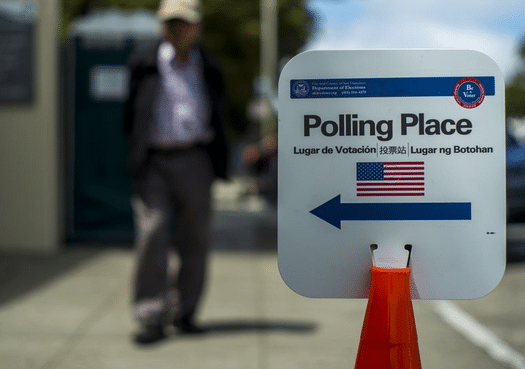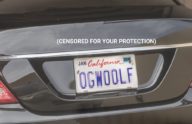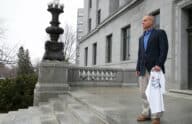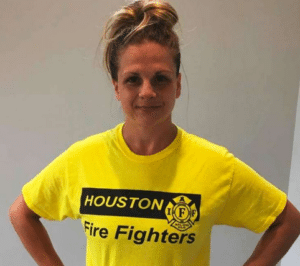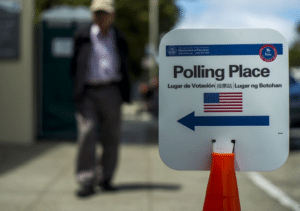While Jillian Ostrewich was standing in line to vote, a Houston election judge took issue with Jillian’s yellow T-shirt with the words “Houston Firefighters” and a small AFL–CIO emblem. On the ballot that day was Proposition B, a proposal to give the city’s firefighters a raise, which led some election judges to prohibit voters from wearing shirts with the firefighters’ union logo and even firefighter uniforms into the polling place. Jillian wore the shirt to support her husband, a longtime Houston firefighter, and her extended firefighter family. The T-shirt said nothing about the ballot initiative, but the election judge ordered her to turn the shirt inside out before she could vote.
Texas’ three interrelated voter apparel laws ban voters from wearing clothing with words or symbols that relate to anything on the ballot, such as a candidate, proposal, or political party, on Election Day and during early voting.
The ban even extends to apparel containing political figures or issues not on the ballot that election. Texas also imposes criminal penalties for violating the law.
Election judges in Texas have wide discretion, including the power to make on-the-spot judgments about which shirts are allowed and which are not. With over 3,000 election judges across the state, such wide discretion leads to wildly inconsistent decisions that leave voters with no way of knowing what’s okay to wear to the polls and what might get them kicked out.
These election laws are still on the books, despite the U.S. Supreme Court’s decision in Minnesota Voters Alliance v. Mansky (2018), which overturned a similar law in Minnesota and held that passive political expression at the polling place—like wearing a T-shirt or hat—is protected by the First Amendment.
However, the Texas law is even worse than the statute struck down in Minnesota. In Texas, it’s not only illegal to wear campaign-related apparel inside polling places, but also within 100 feet of polling place entrances, which often includes public areas like parks, streets, and sidewalks.
Backed by the Minnesota Voters ruling, Jillian fought back with a federal lawsuit arguing that Texas’ vague and inconsistently enforced voter apparel laws violate Texans’ free speech rights. A district court judge partially agreed, holding that two of the three challenged laws were unconstitutional but finding that the third could still be enforced against Jillian because her yellow T-shirt might be “associated” with the firefighter pay ballot measure—even though it said absolutely nothing about Proposition B.
Jillian appealed that decision to the Fifth Circuit Court of Appeals, arguing that the lower court ignored reams of evidence that election judges were incapable of enforcing the voter apparel law consistently, trampling on voters’ free speech rights and making it harder for them to exercise their right to vote. Inexplicably, the appellate court determined that all three voter apparel laws were constitutional, ignoring the U.S. Supreme Court’s ruling in Minnesota Voters.
Undeterred, Jillian took her case all the way to the U.S. Supreme Court, asking the Court to accept her appeal and correct the Fifth Circuit’s serious errors. Unlike other federal courts, the Supreme Court is not required to accept every appeal and decided not to take on Jillian’s case. Texas’ unconstitutional voter apparel laws remain on the books for now, but their days are numbered, thanks to brave freedom fighters like Jillian.
What’s At Stake?
- Polling places are not exempt from the First Amendment.
- No one should be forced to forfeit his or her free speech rights in exchange for the right to vote or vice versa.



